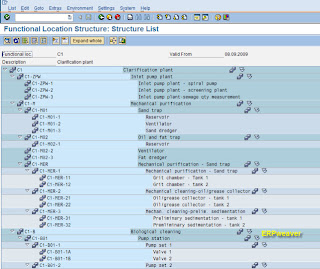In SAP PM technical objects are:
Functional Location:Functional locations are hierarchically ordered structures that represent a technical system, building, or part thereof.
You can structure the functional location according to spatial (for example, building 1, building 2), technical (for example, press, press frame, press hydraulics), or functional, that is, process-oriented criteria (for example, polymerization, condensation).
The aim of creating a functional location is to structure a technical system or building into units that are relevant for Plant Maintenance.
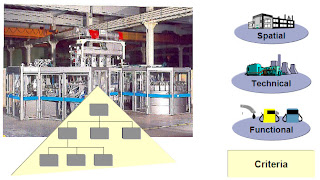 Criteria for Functional Locations
Criteria for Functional LocationsYou should use functional locations to structure your systems if:
- You want to represent the structures of the technical systems in your company according to functional criteria
- Maintenance tasks have to be performed for individual areas in the structure of your technical system and this work must or should be recorded
- Technical data for certain parts of your technical system has to be stored and evaluated over a long period of time
- The costs of maintenance tasks have to be monitored for certain parts of your technical system
- You want to analyze what effects the usage conditions have on the the likelihood of damage to the installed equipment
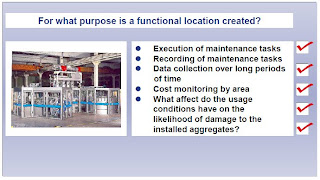 Structure Indicator
Structure IndicatorThe identification for functional locations is created using the structure indicator. The structure
indicator consists of two input fields:
The edit mask is used to control which characters may be used for identification (letters, numbers, or both) and how these characters are grouped together or split. The hierarchy levels are used to define which level ends at which character and how many hierarchy levels the structure may contain.
A functional location can be identified using a maximum of 40 characters (= maximum length of the edit mask).
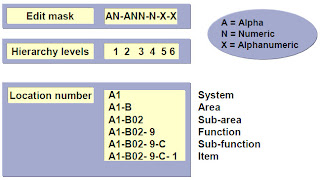 Master Record for Functional Location
Master Record for Functional LocationThe master record for the functional location uses the following views:
- General: Class, object type, reference data, and manufacturer data.
- Location: Location data, address
- Organization: Account assignment (for example, company code, cost center), responsibilities (for example, maintenance planning plant)
- Structure: For example, structure indicator, higher-level functional location, equipment
Additional data or links in the master record for the functional location can also be activated as tab pages or called up using pushbuttons (see graphic).
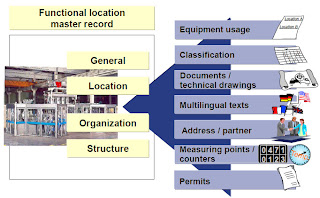
Automatic Assignment Upon CreationThe structure of the functional location is based on the structure indicator.
If you create a new functional location (for example, C1-M01-2), the system checks whether a hierarchy with this structure indicator already exists and whether the new identification is suitable for the existing hierarchy.
If this is the case, when the new functional location is created, it is included in the existing structure.
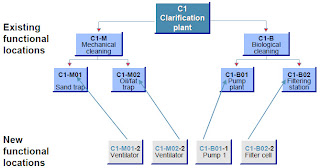 Example of Functional Location Structure
Example of Functional Location Structure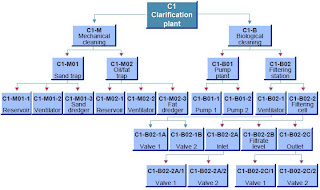
In SAP PM screen:
